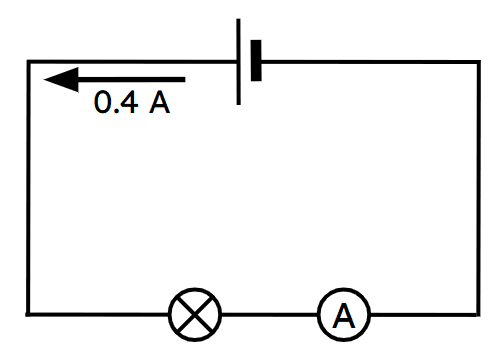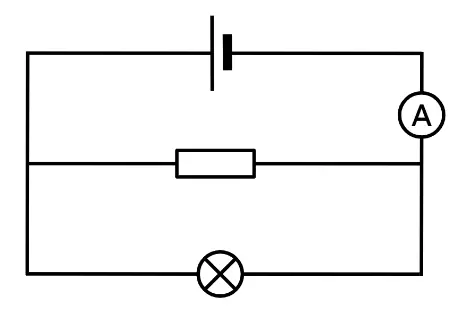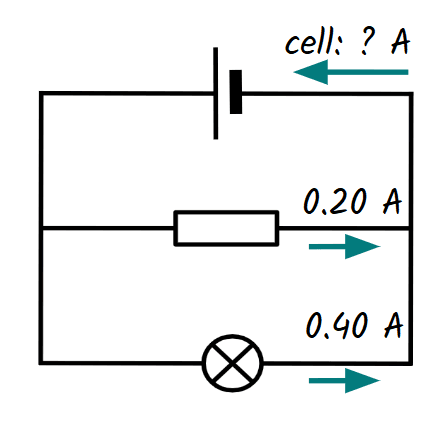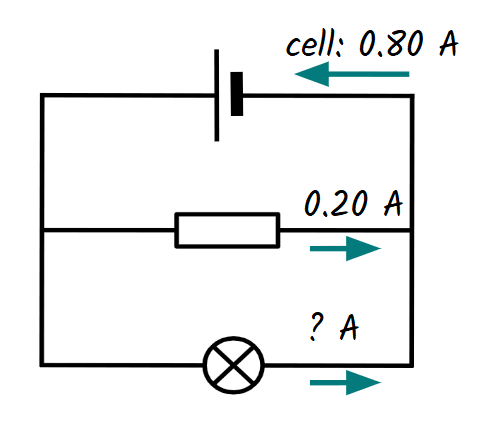Myths about teaching can hold you back
- Year 9
Measuring current in a parallel circuit
I can describe how to measure current through each branch of a parallel circuit.
- Year 9
Measuring current in a parallel circuit
I can describe how to measure current through each branch of a parallel circuit.
These resources were made for remote use during the pandemic, not classroom teaching.
Switch to our new teaching resources now - designed by teachers and leading subject experts, and tested in classrooms.
Lesson details
Key learning points
- Current through the battery in a parallel circuit is measured with an ammeter, connected next to one end of the battery.
- There are connections to the rest of the circuit at the ends of each branch in a parallel circuit.
- The current through a branch of a parallel circuit is measured between its connections to the rest of the circuit.
- The current through each branch of a parallel circuit adds up to the total current through the battery.
Keywords
Ammeter - a device that measures the current flowing in a circuit
Amps - the unit that current is measured in (short for amperes), represented by the symbol A
Branch - a separate loop in a parallel circuit
Parallel circuit - a circuit with more than one complete loop, from one end of a battery round to the other end
Common misconception
Pupils often analyse circuits sequentially, starting from the battery, which makes predicting what current does at a junction impossible.
Teach pupils to analyse each complete loop of a parallel circuit as whole loops. The currents through each loop then add to give the current through the battery (rather than current from the battery miraculously ‘knowing’ how to split at a junction).
To help you plan your year 9 science lesson on: Measuring current in a parallel circuit, download all teaching resources for free and adapt to suit your pupils' needs...
To help you plan your year 9 science lesson on: Measuring current in a parallel circuit, download all teaching resources for free and adapt to suit your pupils' needs.
The starter quiz will activate and check your pupils' prior knowledge, with versions available both with and without answers in PDF format.
We use learning cycles to break down learning into key concepts or ideas linked to the learning outcome. Each learning cycle features explanations with checks for understanding and practice tasks with feedback. All of this is found in our slide decks, ready for you to download and edit. The practice tasks are also available as printable worksheets and some lessons have additional materials with extra material you might need for teaching the lesson.
The assessment exit quiz will test your pupils' understanding of the key learning points.
Our video is a tool for planning, showing how other teachers might teach the lesson, offering helpful tips, modelled explanations and inspiration for your own delivery in the classroom. Plus, you can set it as homework or revision for pupils and keep their learning on track by sharing an online pupil version of this lesson.
Explore more key stage 3 science lessons from the Resistance and parallel circuits unit, dive into the full secondary science curriculum, or learn more about lesson planning.

Equipment
Batteries, electrical leads, 1.5 V bulbs, 5 and 10 ohm resistors and ammeters.
Content guidance
- Risk assessment required - equipment
Supervision
Adult supervision required
Licence
Prior knowledge starter quiz
6 Questions
Q1.Which of the following statements about current in a series circuit is correct?
Q2.Which of the following quantities is an ammeter used to measure?
Q3.Which of the following units is current measured in?
Q4.Which of the following statements about current through a metal wire is correct?
Q5.What is the reading on the ammeter?

Q6.Which of the following statements about an ammeter is correct?
Assessment exit quiz
6 Questions
Q1.A parallel circuit contains a battery and several branches that have different components on.
Which of the following statement is correct?
Q2.Starting with the first step, sort the following steps into the correct order to form a method for adding an ammeter to a circuit to measure the current.
Q3.Which component is the ammeter in the circuit shown measuring the current through?

Q4.What is the rule for current at junctions in a parallel circuit?
Q5.What is the current through the electric cell in the circuit shown?

Q6.What is the current through the lamp in the circuit shown?



